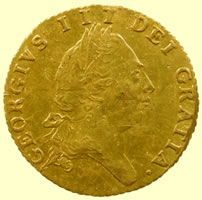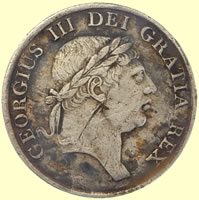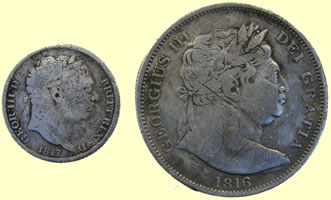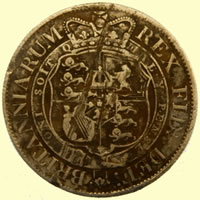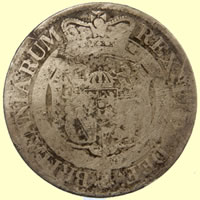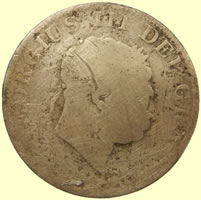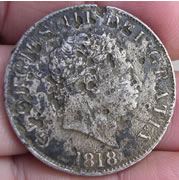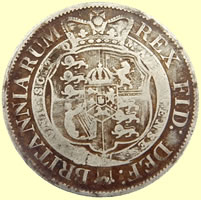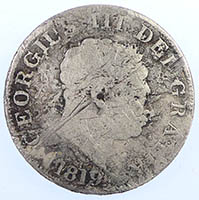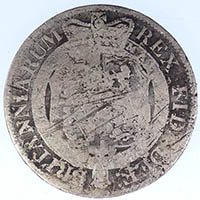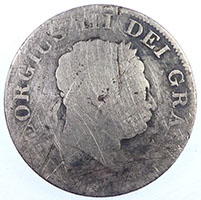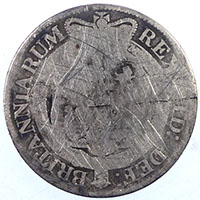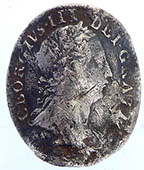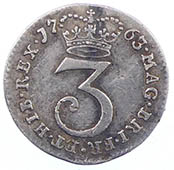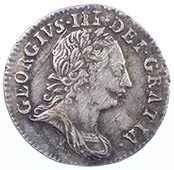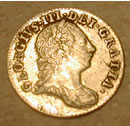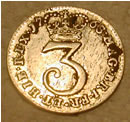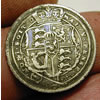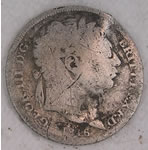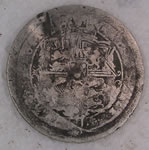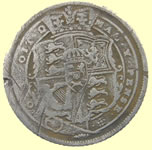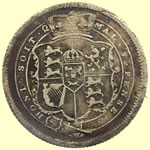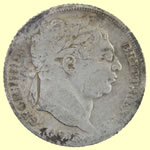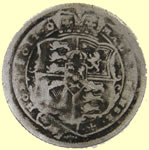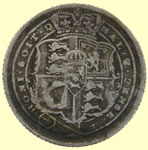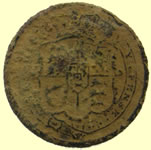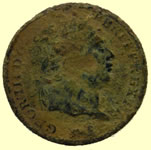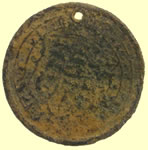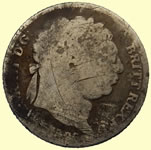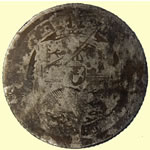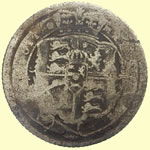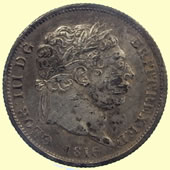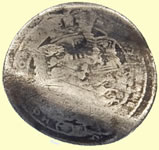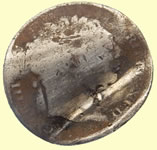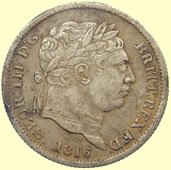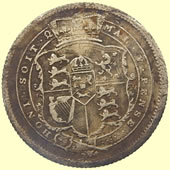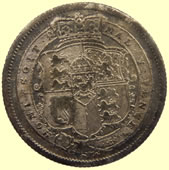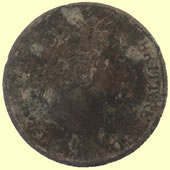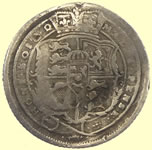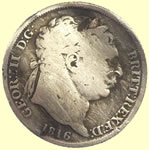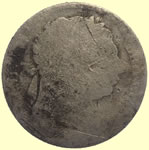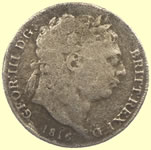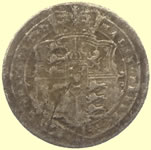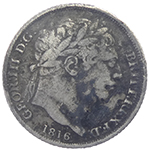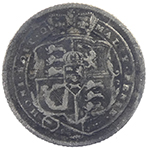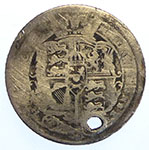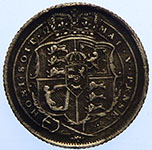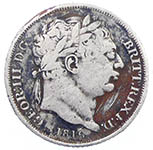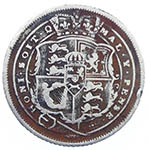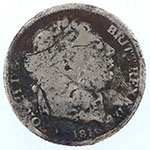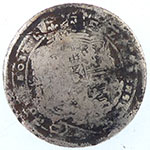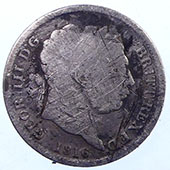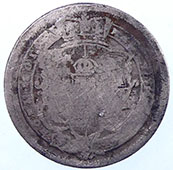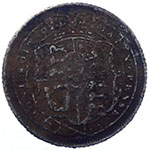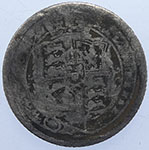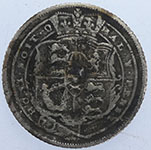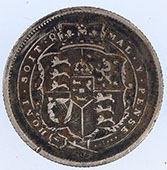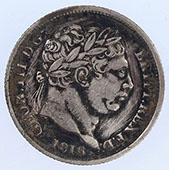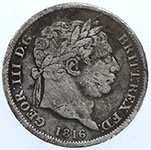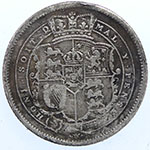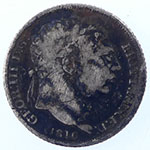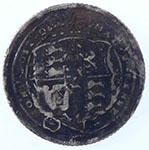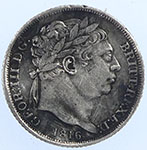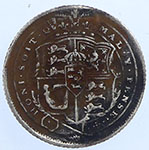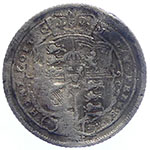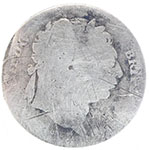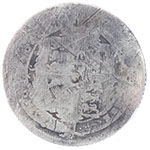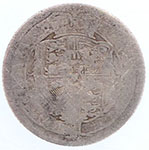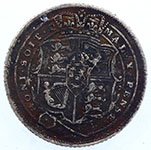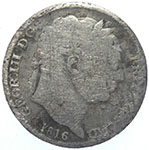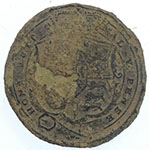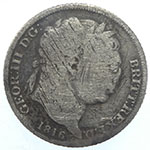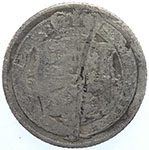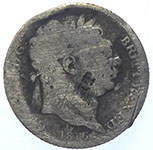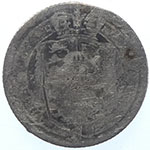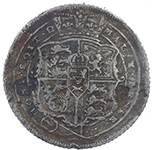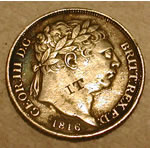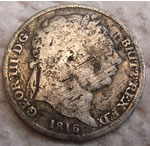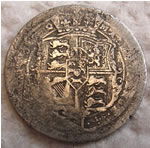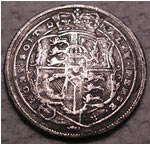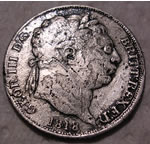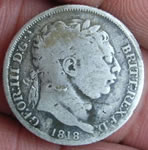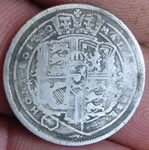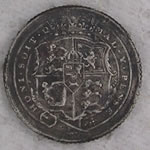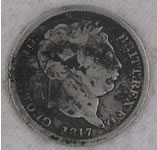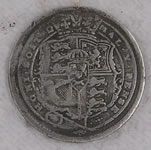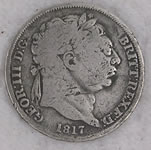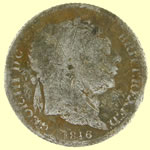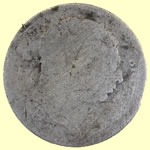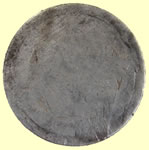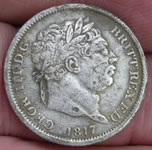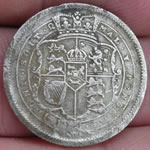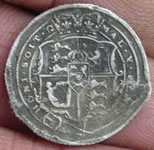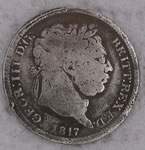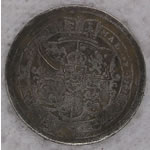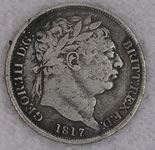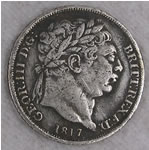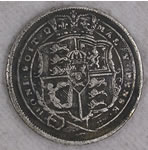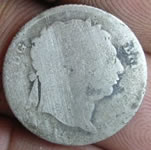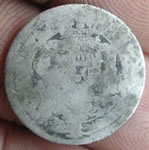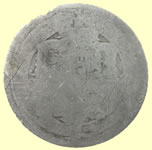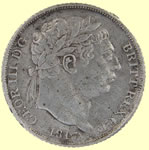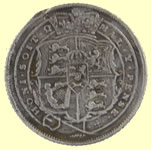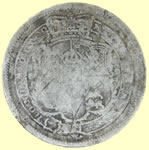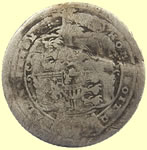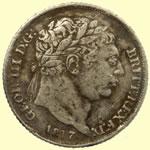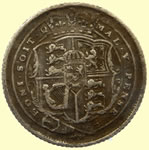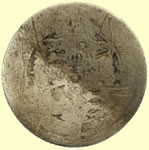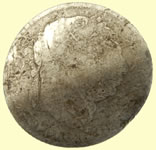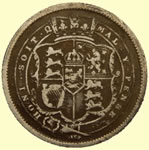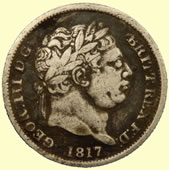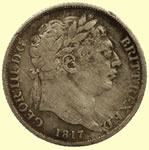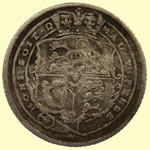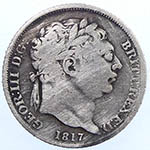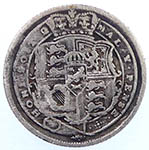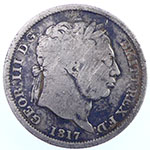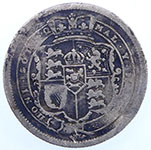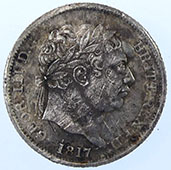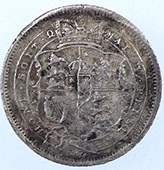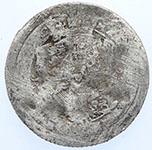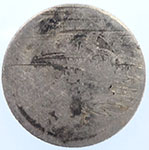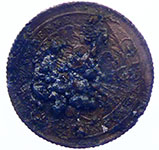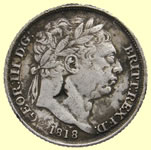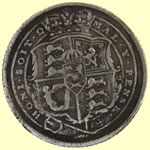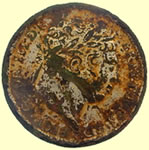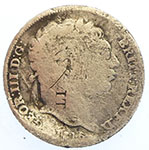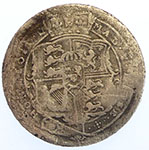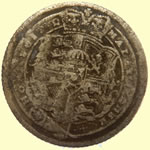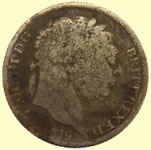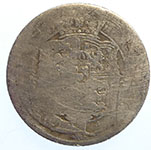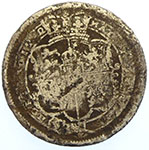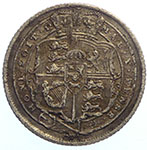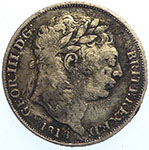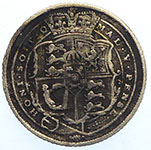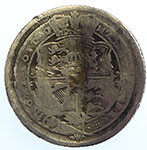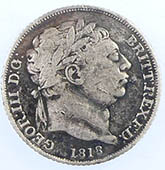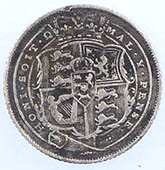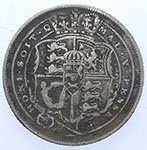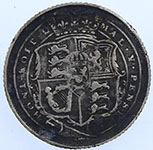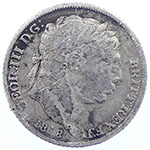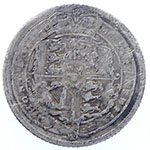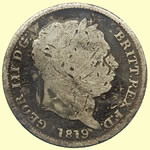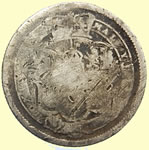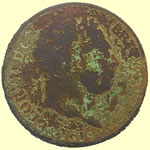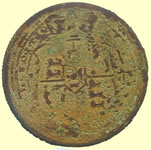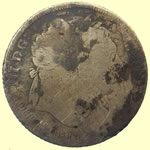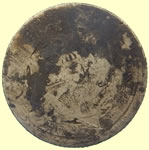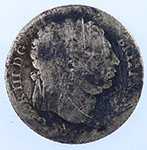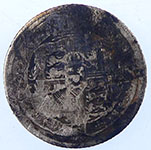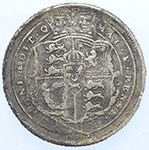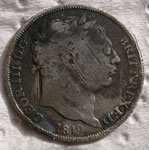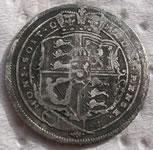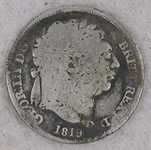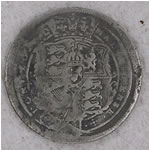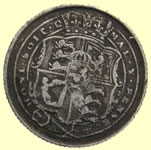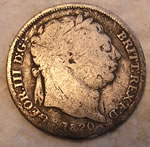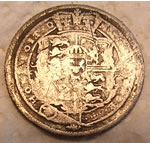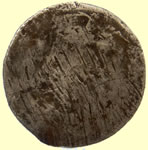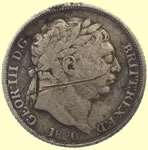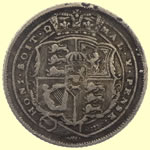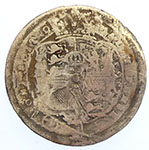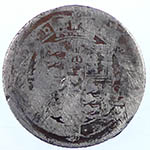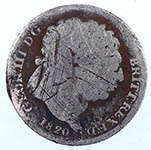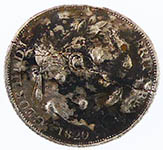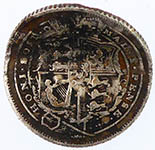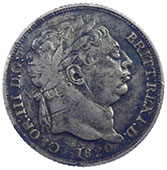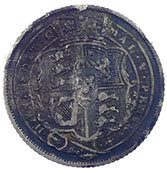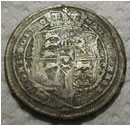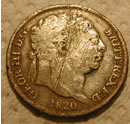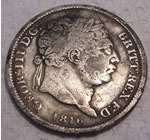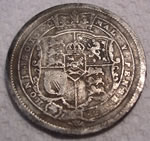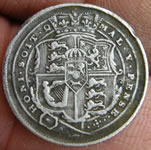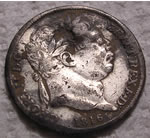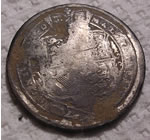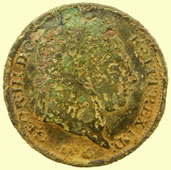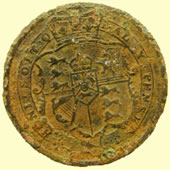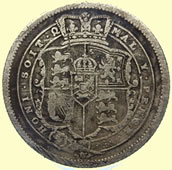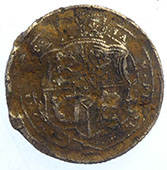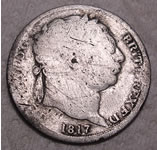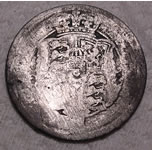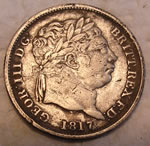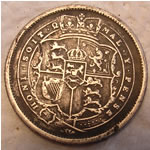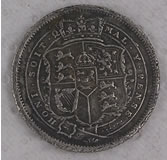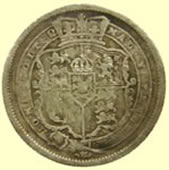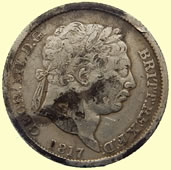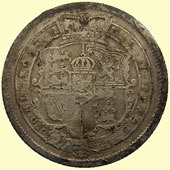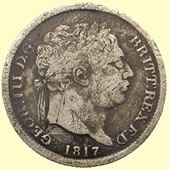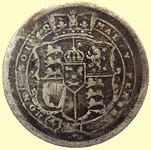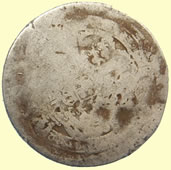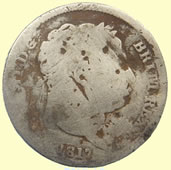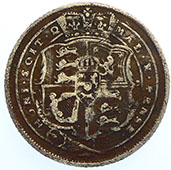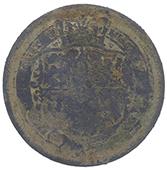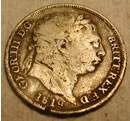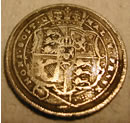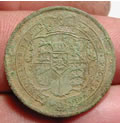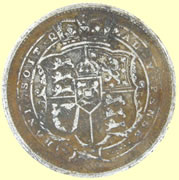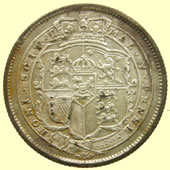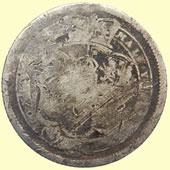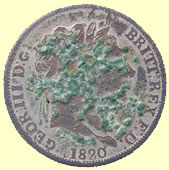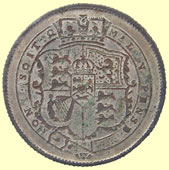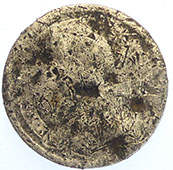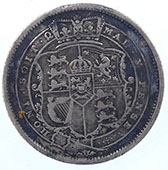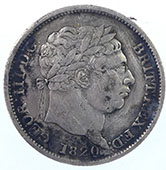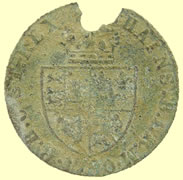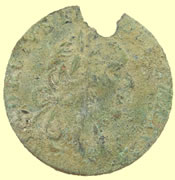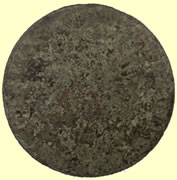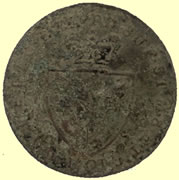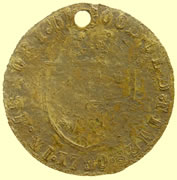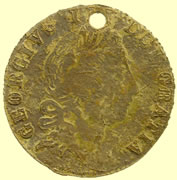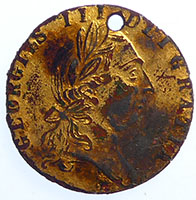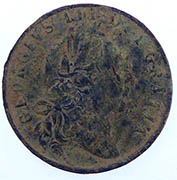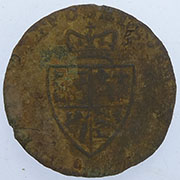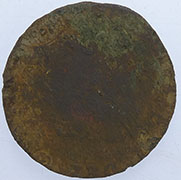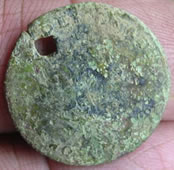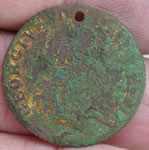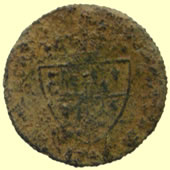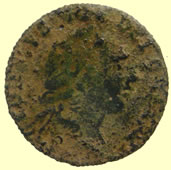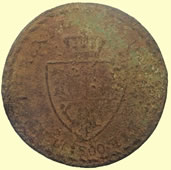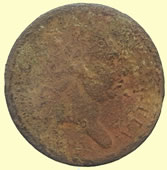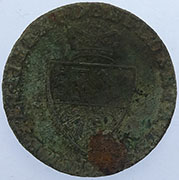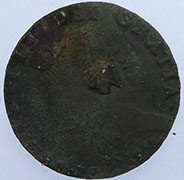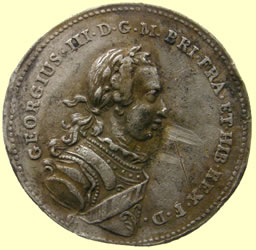

Metal detecting holidays in England with the World's most successful metal detecting club.
Twinned with Midwest Historical Research Society USA
George III milled coinage
|
||
Early George 1st and 2nd coins moved to new page George 1st & 2nd gold and silver coins
George III was born on 4 June 1738 in London, son of Frederick, Prince of Wales and Augusta of Saxe-Gotha. He became heir to the throne when his father died in 1751, succeeding his grandfather George II in 1760. He was the first Hanoverian monarch to use English as his first language. In 1761, George married Charlotte of Mecklenburg-Strelitz and they enjoyed a happy marriage, with 15 children. George chose his mentor the Earl of Bute as his first chief minister. He was a poor choice, isolating George from senior politicians. Effective government became almost impossible, and George was increasingly vilified. The instability following Bute's resignation in 1763 did little to solve the crown's financial difficulties, made worse by the Seven Years' War. In 1770, George appointed Lord North as his first minister. Although an effective administrator, North's government was dominated by disagreements with the American colonists over British attempts to levy taxes on them. War began in 1775 and was prolonged in 1779, at the king's insistence, to prevent copycat protests elsewhere. The British defeat in 1781 prompted North to resign. In 1783, North and the prominent Whig politician Fox formed a coalition government. Their plans to reform the East India Company gave George the chance to regain popularity. He forced the bill's defeat in Parliament, and the two resigned. In their place George appointed William Pitt the Younger. The combination of Pitt's skill and war with France in 1793 strengthened George's position, but disagreements over emancipation of the Catholics - Pitt was in favour and George vehemently opposed - led to Pitt's resignation in 1801. The American war, its political aftermath and family quarrels put great strain on George. After serious bouts of illness in 1788 - 1789 and 1801, thought now to be caused by porphyria, he became permanently deranged in 1810. The Prince of Wales (later George IV) became regent. George remained ill until his death at Windsor Castle on 29 January 1820. In 1801, under the Act of Union Great Britain and Ireland were united into a single nation - the United Kingdom. George was thus the first king of the new nation.
|
||
|
George
III 1760 - 1820 |
||
Guinea
|
||
1777 George III milled gold full guinea (21 shillings) 8.37g, 24.8mm |
||
 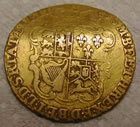 |
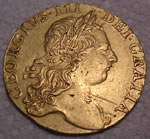 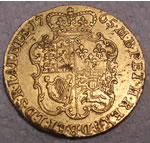 |
|
1786 George
III milled gold guinea |
1765 George
III milled gold Guinea |
|
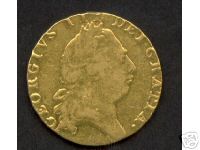 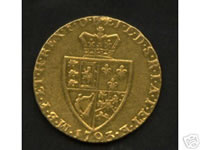 |
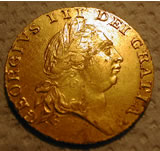 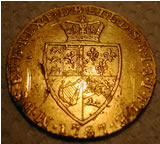 |
|
1783 George III milled gold Guinea |
1787 George
III milled gold Guinea |
|
Half Guinea
|
||
 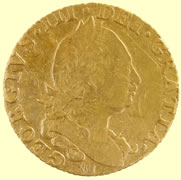 |
|
|
1777 George III milled gold half guinea |
1787 George III milled gold half guinea | |
 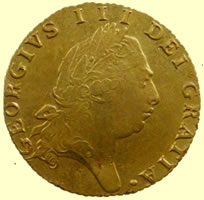 |
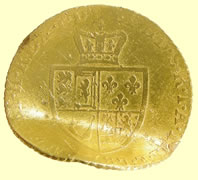 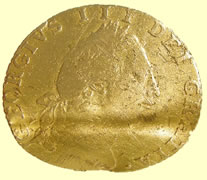 |
|
| 1799 George III milled half gold guinea | 1787 George III milled gold half guinea | |
  |
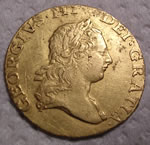 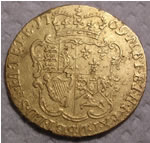 |
|
1790 George III milled gold half guinea 4.08g,20mm dia |
1769 George III milled gold half guinea |
|
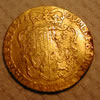  |
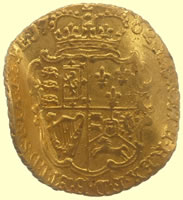 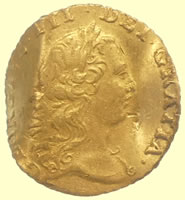 |
|
| 1769 George III milled gold half guinea | 1762 George III milled gold half guinea - love token 2.08g,15.44mm |
|
  |
  |
|
Stunning 1777 George III milled gold half guinea 4.20g,20.61mm |
1789 George III milled gold half guinea 4.2g, 20.7mm |
|
Third Guinea
Neat relic - 1804 George III milled gold 1/3 guinea forgery |
||
 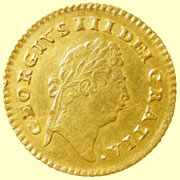 |
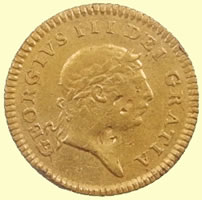  |
|
| 1798 George III milled gold 1/3 guinea | 1804 George III milled gold 1/3rd guinea 2.82g, 17.07mm |
|
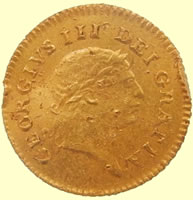 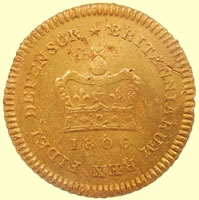 |
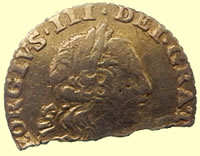 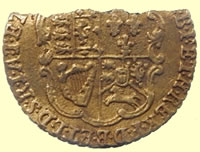 |
|
1806 George III milled gold 1/3rd guinea 2.80g, 17.11mm |
18thC George III milled gold 1/3rdquinea | |
  |
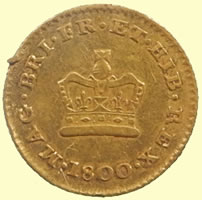 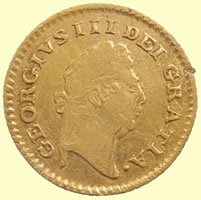 |
|
| 1799 George III milled gold 1/3rd guinea | 1800 George III milled gold 1/3rd guinea | |
 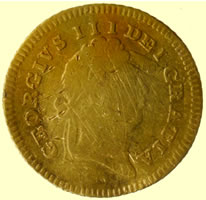 |
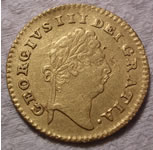 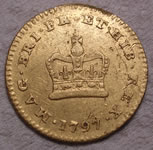 |
|
| 1799 George III milled gold 1/3rd guinea | 1797 George
III milled gold 1/3rd guinea |
|
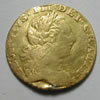  |
  |
|
1796 George
III milled gold 1/3rd guinea |
1804 George III milled gold third guinea 2.76g,17mm |
|
 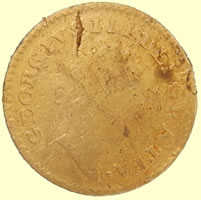 |
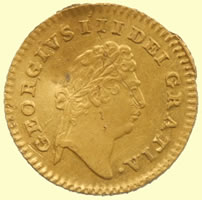  |
|
1800 George III milled gold third guinea 2.76g,17mm |
1797 George III milled gold third guinea 2.82g, 17.07mm |
|
 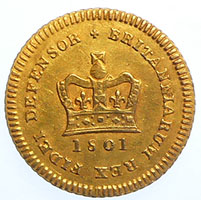 |
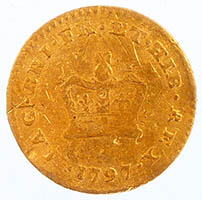 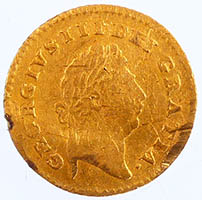 |
|
1801 George III milled gold 1/3rd guinea 2.80g,17mm |
1797 George III milled gold third guinea 2.72g, 16.3mm |
|
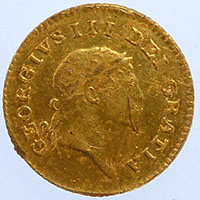  |
||
1808 George III milled gold 1/3 guinea 2.81g, 16.99mm |
||
Quarter Guinea
|
||
 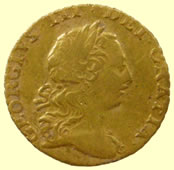 |
  |
|
| 1762 George III milled gold 1/4 guinea - 5 shillings 3 pence | 1762 George III milled gold qtr guinea 15.7mm, 2.06g |
|
  |
  |
|
1762 George III milled gold 1/4 guinea 2.13g,25.72mm |
1762 George III milled gold 1/4 guinea | |
 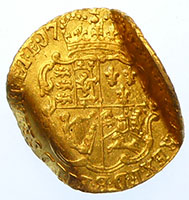 |
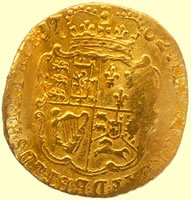 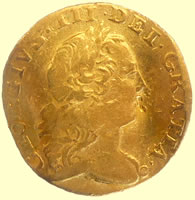 |
|
1762 George III milled gold qtr quinea 16mm, 2.04g |
1762 George III milled gold qtr guinea love token 2.07g,15.35 |
|
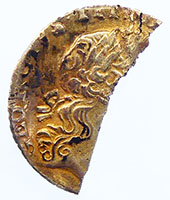 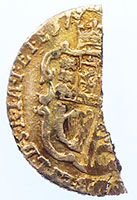 |
||
18thC George III milled gold qtr guinea 0.79g, 15.1mm |
||
Gold SovereignObverse: right facing laureate head; legend, "GEORGIUS D:G: BRITANNIAR: REX F:D:"; the date is at the bottom of the coin. Reverse: Pistrucci's St. George and the dragon inside a garter. Note that St. George is holding a broken lance with a streamer flowing from his helmet. Legend, "HONI. SOIT. QUI. MAL. Y. PENSE." with a small incuse B.P on the left ground below the broken lance and an incuse WWP in the buckle of the garter, these being respectively the initials of Benedetto Pistrucci, the Chief Engraver and William Wesley Pole, the Master of the Mint. 7.98 gram and its diameter as 22 mm. |
||
 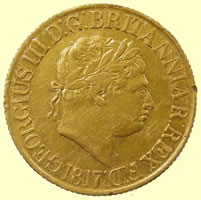 |
||
| 1817 George III full gold sovereign - 8.04g, 22.16mm | ||
Gold half Sovereign |
||
 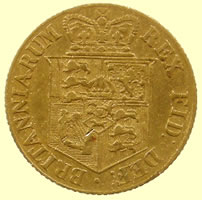 |
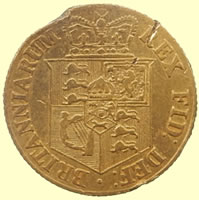 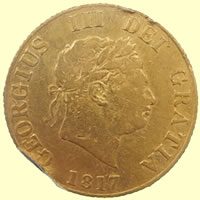 |
|
| 1820 George III milled sold half sovereign | 1817 George III milled gold half sovereign 3.96g,19.26mm |
|
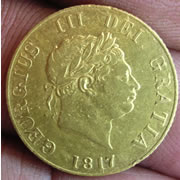 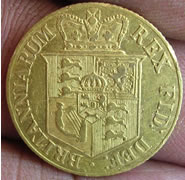 |
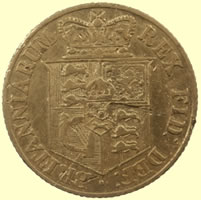 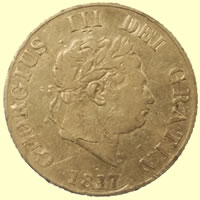 |
|
| 1817 George III milled gold half sovereign | 1817 George III milled gold half sovereign 3.95g,19.44mm |
|
Half crowns (30 pence) and bank tokens |
||
|
1815 George III Bank of England milled silver 3 shillings (36 pence) 14.5g, 35mm |
||
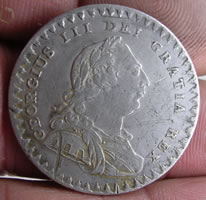 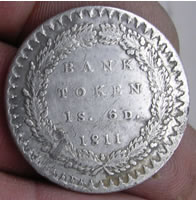 |
  |
|
|
1811 George
III Bank of England issue Eighteen pence milled silver - 1 shilling and six pence |
Stunning 1815 Bank of England issue George III milled silver 1 shilling and 6 pence (18 pence) | |
 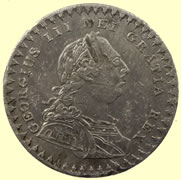 |
  |
|
| 1811 George III milled silver bank token - Eighteenpence | 1811 George III Bank of England issue Eighteen pence milled silver - 1 shilling and six pence | |
|
||
  |
|
|
| 1811 George III milled silver 3 shilling Bank Of England token (36 pence) | 1811 Bank of England milled silver 1s 6D (18 pence) forgery | |
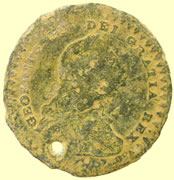 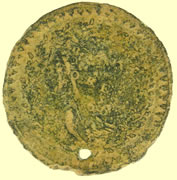 |
 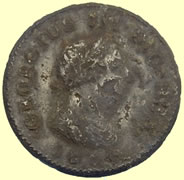 |
|
1811 George III milled silver forgery Eighteen pence (1s 6d) Bank of England issue |
Very rare 1806 George III bullhead silver proof farthing - not sure if this is a period forgery | |
Bank tokens
1816 George III milled silver half crown (30 pence) size comparison with sixpence |
||
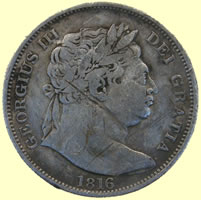 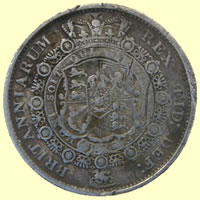 |
||
1816 George III milled silver half crown (30 pence) |
||
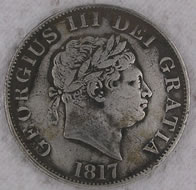 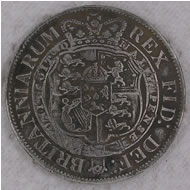 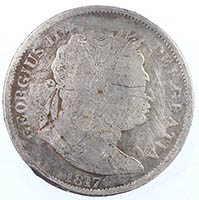 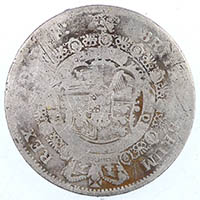 |
||
1817 George III milled silver half crown (30 pence) |
||
1818 George III milled silver half crown (30 pence) |
||
|
||
1819 George III milled silver half crown (30 pence) |
||
| Small change 1, 2 and 3 pence | ||
 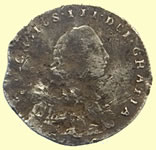 |
||
1781 |
||
 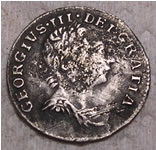  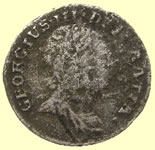 |
||
1784 |
||
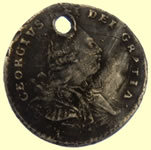    |
||
1792 |
||
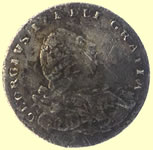    |
||
1795 |
||
   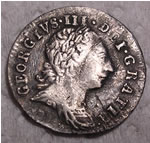 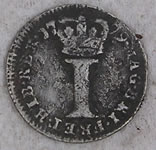 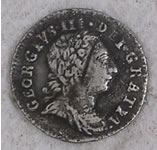 |
||
1779 |
||
  |
||
1800 |
||
George III milled silver 1 pence |
||
 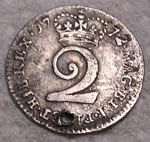 |
||
1772 |
||
George III milled silver 2 pence |
||
     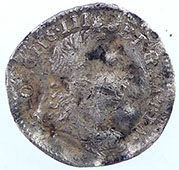 |
||
1762 |
||
|
||
1763 |
||
  |
||
1800 |
||
George III milled silver 3 pence |
||
1815 |
||
Includes forgeries
|
||
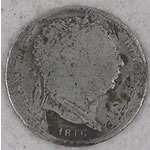 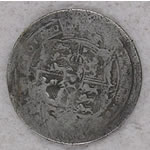 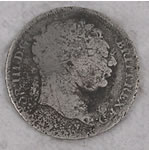 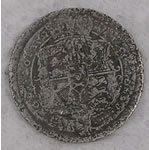 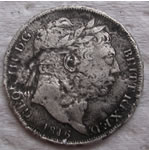 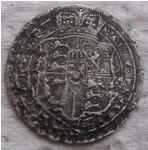 |
||
1816 |
||
|
||
1817 |
||
|
||
1818 |
||
|
||
1819 |
||
|
||
1820 |
||
Sixpences
|
||
1787 Early bust shillings |
||
|
||
1816 shilling (12 pence) |
||
|
||
1817 shilling (12 pence) |
||
|
||
1818 shilling (12 pence) |
||
|
||
1819 shilling (12 pence) |
||
|
||
1820 shilling (12 pence) |
||
Shillings |
||
Medallions and gaming tokens |
||
|
||
George III gold guinea gaming token'For the good old times' |
||
Huge crown sized silver 1760 George III coronation medallion George III , the official silver medal for the coronation, 1761, by L. Natter, laur. and armoured bust r., variety with thinner bust with longer face, rev. King enthroned, crowned by standing Britannia, PATRIAE. OVANTI , normal Latin date MDCCLXI , 34mm. (Eimer 694; BHM 23A) |
||
 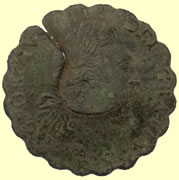 |
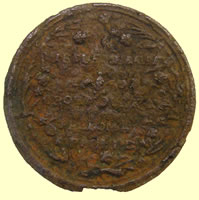 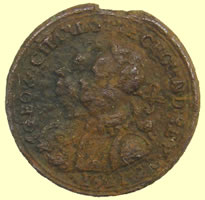 |
|
1788 George III Worchester visit medallion Obv George III Dei Gratia Rev Worchester August 6th 1788 |
1761 George III & Charlotte coronation medallion | |
 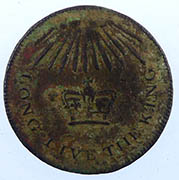 |
||
| 1759-1809 George III 50th year of reign medallion | ||

 George III was the third Hanoverian king of Great Britain. During his reign, Britain lost its American colonies but emerged as a leading power in Europe. He suffered from recurrent fits of madness and after 1810, his son acted as regent.
George III was the third Hanoverian king of Great Britain. During his reign, Britain lost its American colonies but emerged as a leading power in Europe. He suffered from recurrent fits of madness and after 1810, his son acted as regent.


